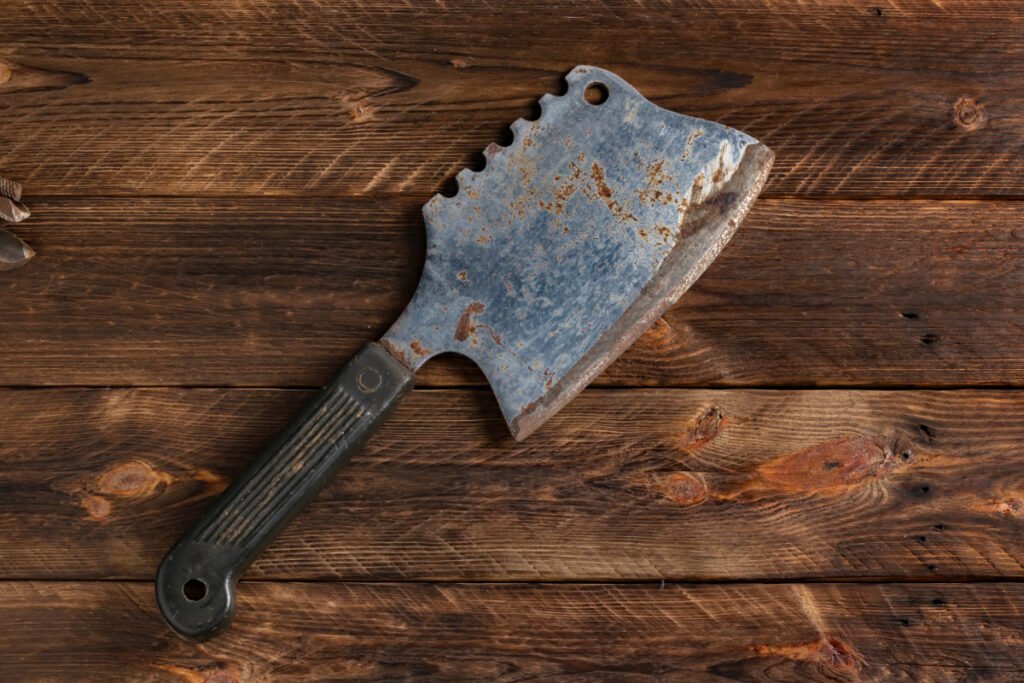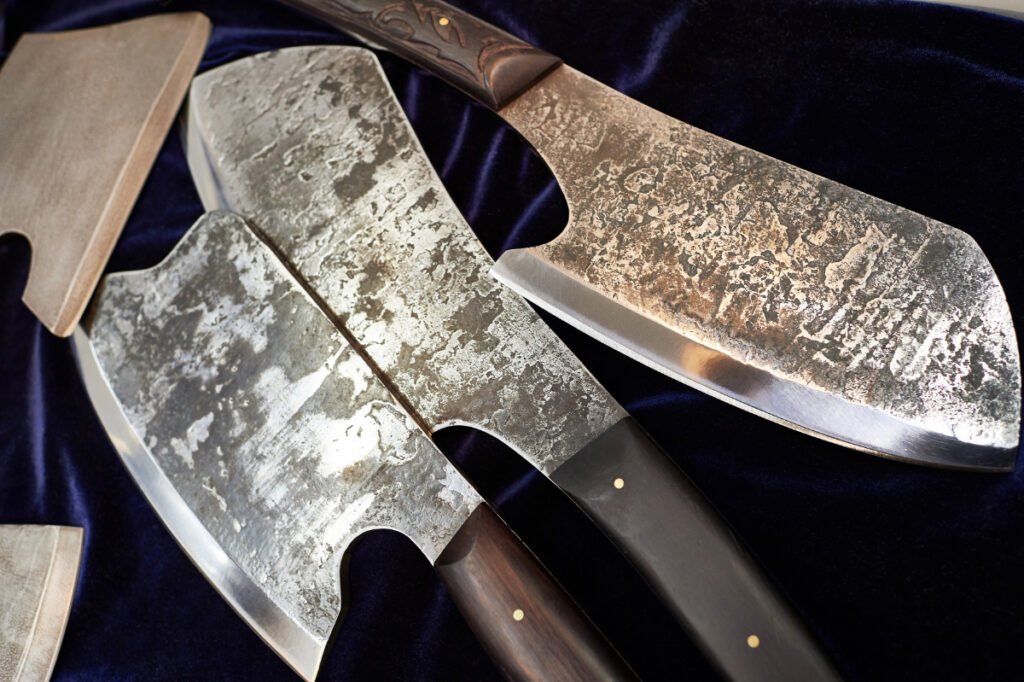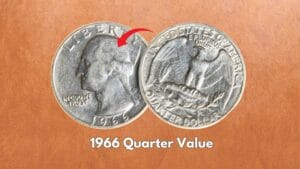As an antique expert, I’ve seen people confusing old knives and meat cleavers. Yes, they may be similar, but meat cleavers are the bigger and more durable of the two! And if they have the right features, they even fetch better returns for you!
But how do you know what features are worth the money? And if your cleaver’s handmade, how do you know at what price to sell it? Well, it’s time you say bye-bye to confusion! Today, I’ll help you identify and value antique meat cleavers in this price guide.
Key Takeaways
- Vintage meat cleavers are always 5- 8” tall, thick, and hammered. Also, check if they have bone, stone, or wood handles for an ancient make.
- Get meat cleavers with flat, curved, or s-shape blades for the best returns. But if you want a unique, foreign piece, even deer or fox-blade cleavers are perfect!
- Ensure that your meat cleaver has a stone, carbon, or iron blade for high value.
- If you don’t want regular, knife-like cleavers, get the fancy Chinese or Japanese ones. You can even try v or compound tangs for more variety!
How Do You Know If Your Meat Cleavers Are Old & Antique?

Take your meat cleaver, hold it evenly, and see if its blade sags or pivots. If yes, you might have a new, riveted chopper. But if it stands straight and fixed, it’s an old one, costing $500 – 1000. Also, look for a small hole or wall hanger on the top right!
But you won’t see the holes if the blade’s broken, right? So, in that case, look for these features:
- Soft steel or iron blades with bone or wood handles and grooves
- A 16” heel with a 13″ blade and a 25° grind
- 0.25 – 0.75 inch thick blade weighing over 2 – 3lbs with end caps
- Curved edges with diagonal grips and hammered steel patterns
How Did Antique Meat Cleavers Evolve?
Can you guess the age of the world’s first meat cleaver? Well, it’s 800,000 years old! So, you’ll obviously see all those ancient features – stone blades and Shellac. But most of these are in museums. So, sadly you won’t get these models for your antique collection!
The collectible ones start from the 1600s! And since it’s the age of metals, you can see cleavers with bronze and brass blades too! But these were really thick, heavy and damaged the chopping board itself! So, people shifted to lighter vegetable knives!
It was in the 1800s and 1900s that makers decided to make meat cleavers usable! So, they used thin steel for the blades and handles. But these cleavers were no longer unique and handmade. So these are cheap, and you can price one for $40 – 50.
2 Types of Antique Meat Cleavers & Their Valuation
Antique meat cleavers don’t have many types, like antique hand axes and swords. But you can count their bevels and classify them into two types for a base price!
1. Single Bevel Meat Cleaver

Ask your antique dealer if he has an old American chisel cleaver. Also, check if it has a round edge and a smooth grind! If yes, it’s a single-bevel meat cleaver! You can also check if it has curved tangs to hike the cost up to $500. Otherwise, $250 – 300 is enough!
2. Double Bevel Meat Cleaver

As the name suggests, double-bevel meat cleavers have two pitches! So, they look tapered and have a double, V-edge on either side. Most also have typical French or European carvings valuing up to $700. Plus, you can also get thick heels and caps with this one!
10 Factors to Identify & Value Antique Meat Cleavers
Now that you know your old meat cleaver’s type, let’s see what factors affect its demand and price in this value guide:
1. Antique Meat Cleaver’s Date & Age

As an antique lover, you’ll love the early 1600s models for their handmade finish and carved handles. But trust me, if you want usable, branded ones, the 1800s ones are best. And if you prefer polished or lacquered ones, get meat cleavers from the late 1850s.
But not everyone wants a thick and hammered meat cleaver! So, if you like those thin, portable cleavers, the 1900s ones are just for you!
Now, you don’t need to ask any expert to age your piece! Here’s how you can do it yourself!
How Do You Spot a 1600 or 1700s Meat Cleaver?
Look for cleavers with a soft carbon blade and carved stone or wood handles to spot these. Also, check if they have animal or natural carvings on the top face. Next, feel their textures. If they look rough and hammered, they cost up to $900. If not, they might be new!
How Does an 1800s Meat Cleaver Look?
Check if your meat cleaver has a dressed cutting edge and split-metal blades. Also, check its weight; if it’s about 2-3 lbs, it’s an 1800s cleaver! Most models would also have seasoned or varnished wood handles. So, you can price them up to $600, as per the brand.
How Do You Know If Your Meat Cleaver Is from the 1900s?
If your meat cleaver has thin, polished steel blades, it must be from the 1900s! You’ll also see curved edges and slanting cores for easy cutting. Plus, most have a patent number for easy tracking. So, you can trace their make and price them for $200 – 300.
Here are some antique meat cleaver patent numbers for help!
| Year | Age | Patent Number | Old Meat Cleaver Type | Average Valuation |
| 1900s | 123 years | US369406 | Butcher’s Cleaver | $200 – 250 |
| 1900s | 123 years | US745162 | Combined Cleaver & Knife | $100 – 120 |
| 1930s | 93 years | US1947896A | Power Meat Cleaver | $50 – 60 |
Pick meat cleavers with slanting tangs and grooved heels for an old make.
2. Old Meat Cleaver Blade Materials

Now, you might think that old choppers only have metal blades! So, let’s burst the myths! Antique cleavers use so many blade materials – stone, carbon, and ceramic! Of these, the handmade stone ones are the most expensive, while the steel blades are cheap!
Want to know how each blade material affects the cleaver’s cost? Here’s a value guide:
| Old Meat Cleaver Blade Materials | Average Valuation |
| Stone, Microlith | $1000 – 1200 |
| Carbon & Ceramic | $600 – 700 |
| Cast Iron, Zinc, Titanium | $500 – 600 |
| Brass, Bronze & Copper | $200 – 300 |
| Alloyed / High Carbide / Damascus Steel | $100 – 120 |
Avoid buying cleaver’s with shiny steel or aluminum blades, as those might lower its cost by 5 – 6%.
3. Antique Meat Cleaver Blade’s Shape

We all know knife-like meat cleavers. But if your piece has a bow or cat-shaped blade, it’s a jackpot! That’s because these pieces are rare and raise the value by 4 – 5%.
Here, you can also look for uniquely carved s-shaped or bumped blades. It’s just that they won’t be sharp!
Here’s a meat cleaver price guide for each blade shape:
| Old Meat Cleaver Blade Shape | Average Valuation |
| Flat, Rectangular or Parallelogram | $1000 – 1200 |
| Curved/ Bow-shape or Concave | $800 – 900 |
| Tapering/ Boat Oar or S-shape | $700 – 750 |
| Dagger Shape or Chiseled | $500 – 600 |
| Fox, Cat, Wolf, Deer or Rabbit Shape | $200 – 300 |
| Bumped or Camelback | $180 – 200 |
Pick meat cleavers with 0.3 – 0.5” thick blades for the best returns.
4. Vintage Meat Cleaver Brands
New, steel cleavers aren’t always cheap and common! Just rotate their blade and look for ‘Shun’ or ‘Henckels’ logos on its surface. If you see one, you can raise its cost by 20 – 25%. So now, you simply have to check the brand’s catalog for the selling price.
Here’s a list of easy-to-collect meat cleaver brands:
| Old Meat Cleaver Name | Manufacturer | Antique Meat Cleaver Type | Average Valuation |
| Skinning Chef Meat Cleaver | Dexter-Russell | Butcher’s Meat Cleaver | $60 – 70 |
| Ajax Series | Johann Friedrich Dick | Kitchen Cleavers | $120 – 150 |
| Heavy, Razor Cleaver | Henckels | Mutton Cleavers | $140 – 150 |
| Trident Meat Cleaver | Ed Wusthof | Butcher’s Cleaver | $100 – 150 |
Avoid getting meat cleavers with chipped, rusty, or scratched blades as they lose their value by 10 – 12%.
5. Vintage Meat Cleaver’s Blade Size

Get a measuring tape and measure your meat cleaver’s blade. If it is 6-8” long, it’s an antique model costing $300 – 500. If it’s short, about 4-5” long, it might be a composite one, costing $150 – 200. But if it’s shorter than that, you might have a new, cheaper meat cleaver.
Check if your antique cleaver has 5-6” long handles for the best returns.
6. Old Cleaver Tang Shape

Hold your meat cleaver horizontally and check its point. Does it have a v-edge or a pen nip-like blade? If yes, you have a v-tang or compound cleaver, costing $500 – 600. But if the tang looks curved or chiseled, it’s a cheap, convex chopper costing $100 – 200.
7. Antique Meat Cleaver Styles
Vintage meat cleavers have two styles – Japanese and Chinese. Of these, the Japanese cleavers have short, samurai knife-like blades and carbon tangs costing $50 – 100. On the other hand, Chinese meat cleavers have thick dragon blades costing $100 -150.
Pick antique meat cleavers with regional animal or flower-carved blades for a foreign make.
8. Old Meat Cleaver Make
Unscrew your cleaver’s handle and check its blade. If it runs all the way to the cleaver’s hilt, it’s an old and stamped cleaver, costing $200 – 300. But, if your cleaver has a thin, riveted blade with extra clamps and plates, it might be cheap and forged. So, choose wisely!
9. Antique Meat Cleaver Finishes
You’ll get antique meat cleavers in two finishes – stained and lacquered. Of this, the lacquer or wax ones are more precious, costing $200 – 300. In contrast, wood-stained or veneered ones are cheaper, up to $100.
Get meat cleavers with a brown, orange, gray, or blackish lacquer for a good value.
10. Old Meat Cleaver Condition
Cleaver Collectors always look for sharp, intact pieces for the best deal. So, if your cleaver has a broken handle or blade, it loses its value by 10 – 15%. Similarly, the value decreases by 5 – 6% if it’s rusty or greasy. And, if the cleaver has caught mold, it values less than $50.
How Do You Sharpen Antique Meat Cleavers?
Take 100-grit sandpaper or steel wool and sand the blade from heel to toe. You can even use an electric sharpener or whetstone to add more grind to a blunt blade.
What Is the Best Angle for an Antique Meat Cleaver?
Pick meat cleavers with a 25 – 30° grind for the best returns. But you can also go up to 35° if the meat cleaver is sharp and v-shaped.
How Often Should You Sharpen an Old Meat Cleaver?
As a general rule, you should sharpen your cleaver’s blade once in 2-3 months for the best resale. But if the blade’s chipped or rusty, you can sand it once a year.
What Are the Numbers on Old Chinese Meat Cleavers?
The numbers on old Chinese meat cleavers indicate their size in a series. For instance, number 3 indicates a small fish cleaver, 2 shows a chicken cleaver, and 1 means a large beef cleaver.
Antique meat cleavers sell fast at any auction! That’s because they have unique blade motifs and finishes! And even their hammered blades and handles add an extra cherry to the cake. So if you have one, it’s time to check its features using this meat cleaver price guide.
What other kitchenware would you like us to identify? ‘Antique Spoons,’ ‘Cut glass pieces,’ or ‘Old Glass Pitchers’? Well, we already have a ready guide for each!
Note: This article is intended for informational, educational, and entertainment purposes only. Some images are illustrative and may not represent actual brands, products, or related entities. All trademarks, product names, brand logos, packaging, and other intellectual property referenced remain the exclusive property of their respective owners. Any brand mentions or references are provided solely for descriptive and educational context and do not imply any formal or commercial association.










